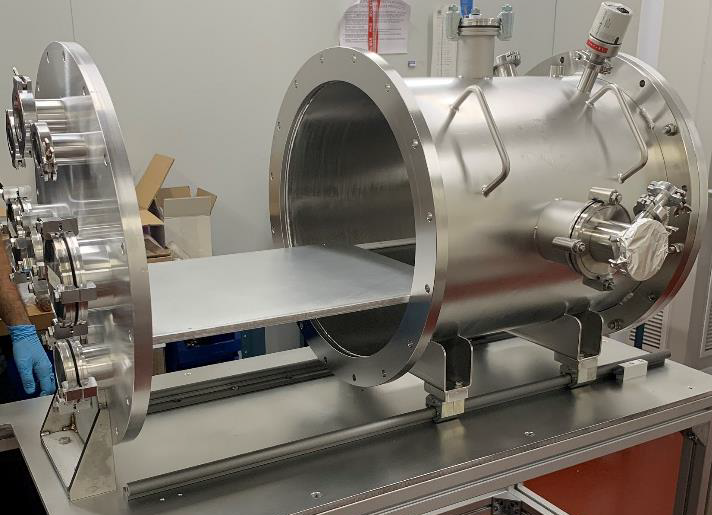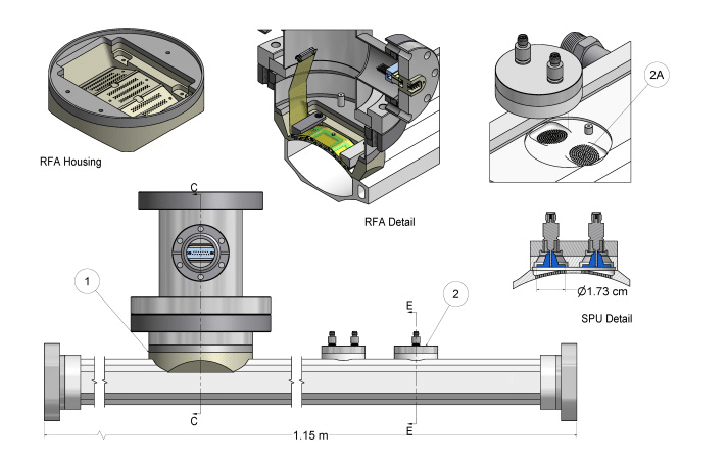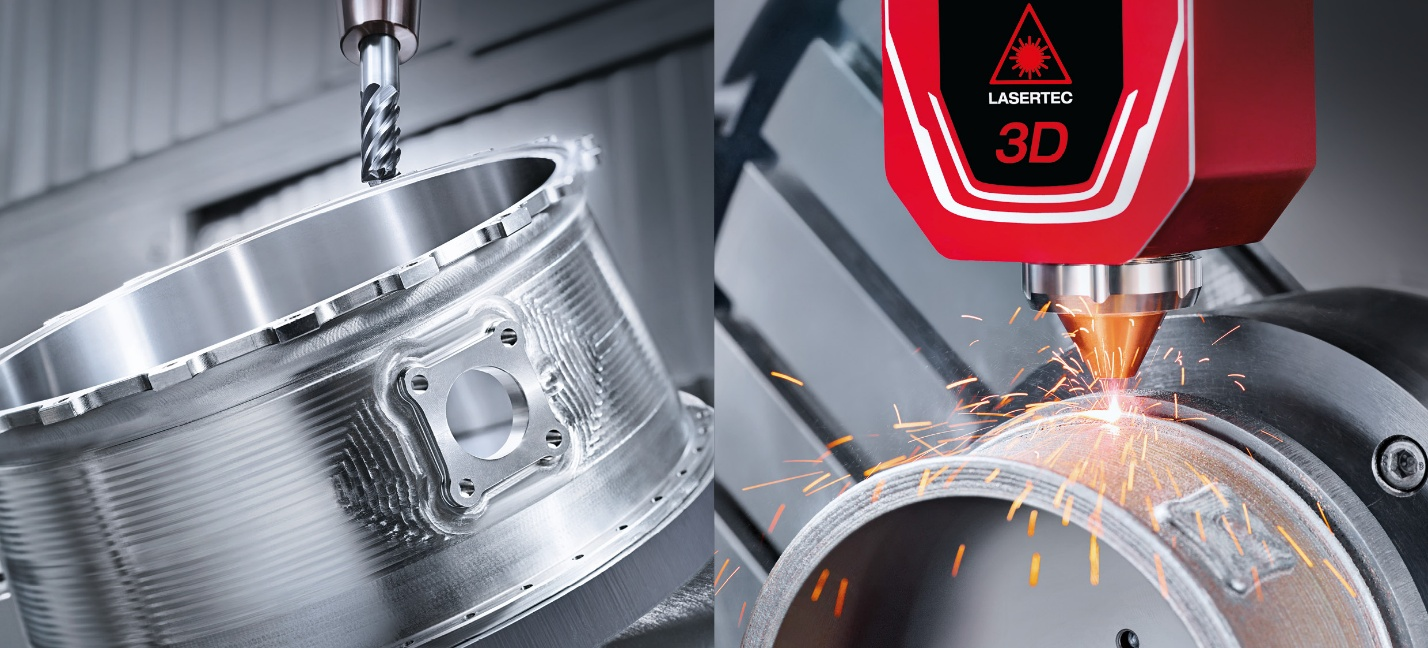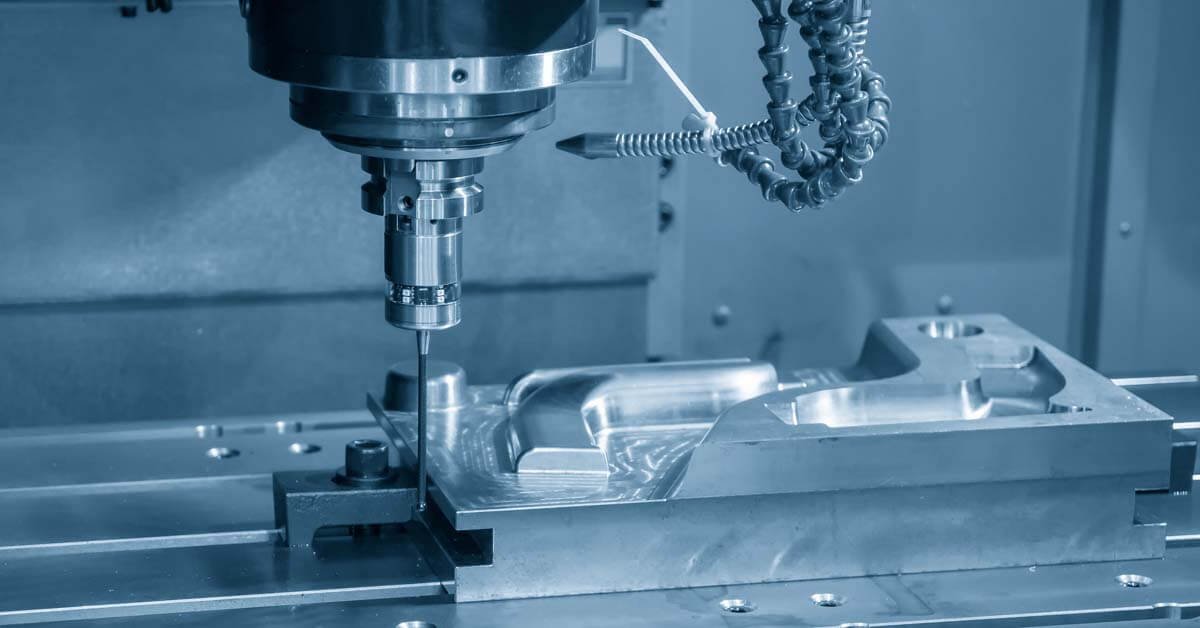Modern manufacturing has undergone a revolution as a result of technological breakthroughs.
The pursuit of effectiveness, excellence, and innovation is crucial in every aspect of industrial processes and production. The vacuum chamber is a key device that has grown significantly in value in the industrial sector.
Vacuum chambers have become essential resources for numerous sectors among the many cutting-edge instruments and methods. These enclosed spaces, which are free of air and atmospheric pressure, provide a wealth of advantages that significantly improve the production process.
Vacuum chambers have demonstrated their value in producing excellent outcomes in various industries, including electronics, aerospace, and more. But, what is the purpose of a vacuum chamber? In this blog, we will discuss the significance of vacuum chambers and different types of industrial sectors in detail. So, let’s move deep into it.
What is Vacuum Chamber?
A vacuum chamber is an enclosed vessel from which oxygen and other gases can be expelled to create a low-pressure or vacuum atmosphere. It is used to analyze and manipulate items in controlled environments with low air pressure for a variety of scientific, industrial, and research purposes.
The pressure in a vacuum chamber is much lower than the atmospheric pressure at sea level, which is roughly 14.7 pounds per square inch (101.3 kilopascals). It is possible to minimize or completely eliminate the impact of air or gas molecules on the things inside a chamber by lowering the pressure there.
The driving factors behind vacuum chambers' rise to popularity in the industrial sector are examined in this article. We look into their fundamental ideas, numerous uses, and the benefits they provide for business procedures. Thus, Let’s move ahead.

Types of Vacuum Chambers
By removing air and other gases, vacuum chambers are specialized enclosures that are used to generate and maintain a low-pressure environment. They are widely employed in several industrial, scientific, and technological applications. Here are a few typical varieties of vacuum chambers:
Thermal vacuum chambers:
These chambers are made to mimic the high temperatures and intense vacuum found in space. They are employed for testing satellites and aerospace parts to make sure they operate properly in conditions resembling space.
Altitude Chamber:
By producing a low-pressure environment, altitude chambers mimic high-altitude circumstances. They are employed to evaluate the performance and operation of various aircraft parts, including the avionics, fuel systems, and engines, at multiple altitudes.
Glovebox:
Gloveboxes contain enclosed spaces with integrated gloves that let users handle delicate items or carry out tasks in a secure setting. To avoid contamination and preserve a regulated environment, they are frequently employed in sectors including semiconductor manufacturing, electronics, and the pharmaceutical industry.
Cylindrical Chamber:
Cylindrical vacuum chambers have cylindrical walls and frequently include detachable lids or flanges on the ends for simple access. They can support a variety of experimental setups or tools due to their adaptability.

High-Pressure High-Temperature (HPHT) Chambers:
HPHT chambers are made to endure circumstances of very high pressure and high temperature. In materials science, geology, and the diamond business, they are frequently employed.
Spherical Vacuum Chambers:
Because of their spherical shape, spherical vacuum chambers enable the even distribution of forces and pressures. They are frequently employed in situations where symmetry and uniform pressure distribution are crucial.
Advantages of Vacuum Chamber Usage in Manufacturing
Vacuum chamber use in manufacturing processes has many benefits, especially for sectors like electronics, aerospace, and medicines. We have discussed the benefits of the vacuum chamber in more detail below.:
1. Removal of Air and Moisture:
The main purpose of vacuum chambers is to provide a regulated environment with low levels of moisture and air pressure. This is essential in the production process since air and moisture can impair the quality and functionality of the final product. Manufacturers can improve the dependability and lifetime of their products by eliminating these components.
2. Improve product Quality:
A Hoover environment reduces the presence of impurities including dust particles, gases, and toxins, improving product quality. As a result of fewer flaws and more uniformity, the product quality rises. It is particularly useful for sectors like semiconductor fabrication or optical coatings that demand accuracy and high-quality standards.
3. Enhanced Coating and Deposition Methods:
Physical vapor deposition (PVD) and chemical vapor deposition (CVD) are two coating and deposition methods that frequently involve vacuum chambers. The lack of air in the chamber enables enhanced oversight of the coating procedure, assuring coating uniformity, thickness, and substrate adhesion. This enhances the functionality, corrosion resistance, and aesthetic appeal of the product.
4. Heat Treatment and Annealing:
Vacuum chambers are frequently employed in heat treatment and annealing procedures. By eliminating air, the mechanics for transferring heat are altered, allowing for more consistent heating and cooling of the materials. This may lead to higher material performance, decreased residual stresses, and enhanced mechanical characteristics.
5. Increased Process Control:
Vacuum chambers give producers a regulated and isolated environment for a variety of production operations, increasing process control. Temperature, pressure, and gas composition can all be precisely controlled because of the low pressure and lack of outside influences. Increased process repeatability, accuracy, and consistency at this level of control result in higher yields and less waste.
6. Reduced Oxidation and Degradation:
Certain materials are susceptible to oxidation and degradation due to the presence of oxygen and other reactive gases in the atmosphere. Manufacturers can drastically limit or completely avoid exposure to harmful gases by working in a vacuum chamber, protecting the integrity and characteristics of delicate materials or parts.
7. Efficient Degassing and Drying:
Vacuum chambers are frequently employed for degassing and drying procedures because they are efficient. In a variety of manufacturing applications, such as casting, molding, or electronics assembly, it is crucial to eliminate impurities and precipitation from materials. Materials that have been subjected to a hoover can more efficiently extract trapped gases and moisture, improving both the performance and quality of the materials.
Applications of Vacuum Chambers in the Manufacturing Industry
Vacuum chambers are frequently utilized in the manufacturing sector for a variety of tasks. Here are a few typical uses:
1. Thin Film Deposition:
Vacuum chambers are necessary for thin film deposition procedures including physical vapor deposition (PVD) and chemical vapor deposition (CVD). The lack of air or other impurities in the chamber guarantees the purity and quality of the deposited films, which are created by these procedures by depositing a thin layer of material onto a substrate.

Thin film deposition Technique
2. Semiconductor Manufacturing:
Vacuum chambers are essential to the production of semiconductors. When precise control of pressure, temperature, and gas composition is necessary to create integrated circuits and other semiconductor devices, they are utilized in processes like molecular beam epitaxy (MBE) and plasma etching.
3. Degassing and Defoaming:
Vacuum chambers are employed in the degassing and defoaming processes in the casting, molding, and electronics industries to remove entrapped gases and air bubbles from materials. Gases are drawn out of the material by vacuuming, enhancing the end product's quality and structural reliability.
4. Testing and Accelerated Ageing:
Vacuum chambers are used for testing and accelerated aging of goods and materials. Manufacturers may imitate the impacts of prolonged use, extremely high temperatures, and other environmental elements in a shorter amount of time by putting them under controlled vacuum settings. This aids in evaluating the performance, durability, and reliability of a product.
5. Leak Testing:
Different items, including automobile parts, pipes, valves, and sealed electronic equipment, are tested for leaks using vacuum chambers. Leaks can be found due to the vacuum inside the chamber, which allows for the monitoring of pressure fluctuations or the use of tracer gases.

6. Metallurgy and Heat Treatment:
Heat treatment, sintering, and brazing are just a few of the metallurgical procedures where vacuum chambers are used. Improved material qualities and surface finishes result from the controlled cooling and heating procedures made possible by the lack of air or oxygen in the chamber, which also avoids oxidation.
7. Vacuum Drying and Dehydration:
In order to successfully remove moisture from some items, such as food goods, pharmaceuticals, and electronic components, vacuum drying or dehydration techniques are needed. Vacuum chambers create a low-pressure atmosphere that makes it easier to remove moisture at low temperatures, protecting delicate materials from heat damage.
Factors to Consider When Selecting a Vacuum Chamber
To choose a vacuum chamber that will fulfill the demands of your application, you must take into account a number of criteria. The following are some crucial things to think about:
Vacuum Level:
Determine the amount of Hoover that is necessary for your application. The capacity of various vacuum chambers to reach and sustain particular vacuum levels varies.
Size and Volume:
Take into account the samples' or equipment's volume needs before placing them inside the vacuum chamber. Make sure the chamber has enough room to comfortably house your parts or experiments.
Material Compatibility:
Verify whether the materials used to construct the vacuum chamber are compatible with the objects you plan to subject to vacuum. Aspects including thermal stability, outgassing characteristics, and chemical resistance should be taken into account. Stainless steel, aluminum, glass, and other polymers are frequently utilized as building blocks for vacuum chambers.
Design and Construction:
Consider the vacuum chamber's design and construction. Search for strong, resilient materials that can bear mechanical stress and vacuum pressure. Think of features like Hoover seals, ports, windows, access points, and general user-friendliness.

Design of Experimental Vacuum Chamber
Vacuum Pump Compatibility:
Check to see if the vacuum chamber is compatible with the vacuum pump you intend to utilize. Verify the pumping speed needed, the inlet/outlet size, and any other accessories or fittings required to connect the pump to the chamber.
Safety Elements:
Depending on your application, think about any particular safety elements you might require. This might consist of components like temperature sensors, pressure relief valves, interlocks, and emergency shutdown mechanisms.
Budget:
Last but not least, take into account your financial limitations. Depending on their size, features, and quality, vacuum chambers can fluctuate significantly in price. Finding a balance between your needs and the budget at your disposal is crucial.
Sealing Mechanism:
Pay particular consideration to the chamber's sealing system. To maintain the correct vacuum level, the sealing technique must be trustworthy and effective. O-ring seals, knife-edge seals, and conflat flanges are often used in sealing techniques.
Monitoring and observation:
Pick an experiment chamber with transparent windows or viewing ports when visual observation is required. The accessibility of monitoring instruments like pressure gauges, temperature sensors, and Hoover control systems should also be taken into account.
Future Development
Vacuum chamber technology is projected to continue to advance as a result of developments in a variety of industries, such as manufacturing, space exploration, and scientific research. Here are a few suggested directions for improvement:
Improved Vacuum Levels:
To produce more controlled and exact experimental settings, researchers will keep working to increase the vacuum in the chambers. Achieving ultra-high vacuum (UHV) or even extreme high vacuum (XHV) conditions will require the development of new pumping systems and sealing techniques.
Miniaturization:
Compact and portable vacuum chambers are becoming more and more in demand, particularly in industries like microelectronics, nanotechnology, and biotechnology. Future vacuum chambers might be made smaller while yet retaining the necessary functionality and performance.
Integrated Sensing and Monitoring:
Vacuum chambers may have integrated sensing and monitoring systems to offer real-time monitoring and control of variables including pressure, temperature, gas composition, and contamination levels. The process control and general effectiveness of experiments or manufacturing processes carried out inside the chamber would both be improved by this integration.
Advanced Materials and Coatings:
Developing novel materials and coatings will be essential to enhancing vacuum chamber performance. For instance, using innovative materials with minimal outgassing characteristics can lower contamination levels and enhance vacuum stability.
Automation and robotics:
Future vacuum chambers may combine cutting-edge automation and robotics technology to increase productivity and minimize human interference. This might involve robotic arm integration, automated sample handling, and intelligent control systems that adjust experimental parameters in response to real-time data.

Capabilities for High Temperature and High Pressure:
Vacuum chambers must be able to withstand extreme circumstances, such as high temperatures and pressures. Researchers will be able to replicate and examine situations encountered in deep-sea exploration, space travel, or industrial processes that need harsh conditions due to these chambers.
Integration of Virtual and Augmented Reality:
To improve visualization and interaction capabilities, vacuum chambers could be equipped with virtual and augmented reality advancements. To improve analysis and control, researchers might overlay a virtual model of the test or manufacturing procedure onto the actual chamber.
Conclusion:
Vacuum chambers' capacity to produce regulated environments free of undesired gases has made them indispensable in the industrial sector. Their uses are widespread and include anything from research and development to the production of electronics and materials processing.
Vacuum chambers are used for testing, processing, and research in the industrial sector because they offer regulated settings. They give producers the capacity to enhance the quality of their products, create cutting-edge innovations, and guarantee the dependability of their materials and components across a variety of industries.
Industries can improve their operations, boost product quality, and increase scientific knowledge by utilizing Hoover technology's capabilities. Vacuum chambers are anticipated to play a more and bigger part in the future of industrial development and exploration as technology advances. This article was informative for you? Do you have anything to share about this blog? Do let us know by commenting below.







